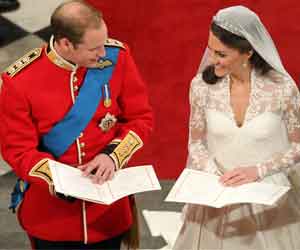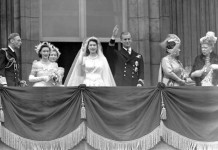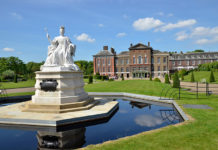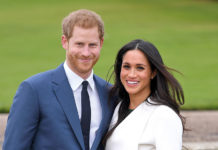“The genius of an event like this,” said historian Simon Schama, of the royal wedding ceremony, “is its simplicity. It’s simultaneously magnificent and very simple.”

The balance of glorious British traditions and a profound sense of ceremony with a classic, heartfelt love story made the couple’s wedding service in Westminster Abbey a joy to watch.
The Abbey itself looked stunning. The red carpet and chandeliers were to be expected, but the avenue of 200-foot maple trees, newly in leaf and stretching up towards the Gothic arches, were a surprise, and made the somber nave feel like a springtime bower.
Catherine’s procession down the aisle to Sir Hubert Parry’s I Was Glad set the musical style for the service: richly orchestrated, in large part Victorian and thoroughly patriotic – with Parry’s hymn Jerusalem, set to words by the poet William Blake, marking the rousing apotheosis of this trend.

More modern compositions included an anthem specially commissioned for the service by John Rutter, and an arrangement of Ubi Caritas by Paul Mealor for the motet. These quieter, more reflective pieces made a nice contrast to the royal fanfares that opened and closed the service, and William Walton’s magnificent Crown Imperial to which the bride and groom processed out.
The heart of the ceremony, though, was the exchange of vows – prompting a huge cheer from the crowds on the mall that could be heard even in the Abbey itself. The young couple were composed and solemn, but shared glances and smiles that made all the tradition and formality – which could have felt oppressive – feel instead consciously chosen and even enjoyed.
James Middleton, Catherine’s younger brother, read the lesson from Romans; and the Bishop of London gave the address, telling them, “Be who God meant you to be, and you will set the world on fire.”
When the newly married couple stepped out of the abbey’s entrance they were met with sunshine, pealing bells and a euphoric, cheering crowd, and climbed into the waiting horse-drawn carriage for the procession back to Buckingham Palace. This was the 1902 State Landau, with crimson satin seats and gold detailing, built by Edward VII with the intention of being used at his coronation, and restored just in the last few years.
This was not the only horse-drawn carriage in the procession, though. The Glass Coach, built in 1881 and purchased for use at George V’s coronation in 1911, carried the Queen and the Duke of Edinburgh; and Prince Harry and Pippa Middleton followed in Ascot Landaus with the bridesmaids and pageboys, waving at the crowd.





 © 2024
© 2024